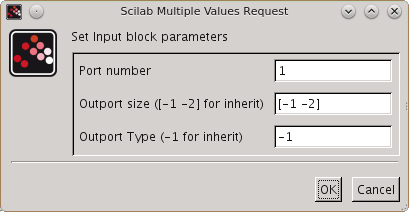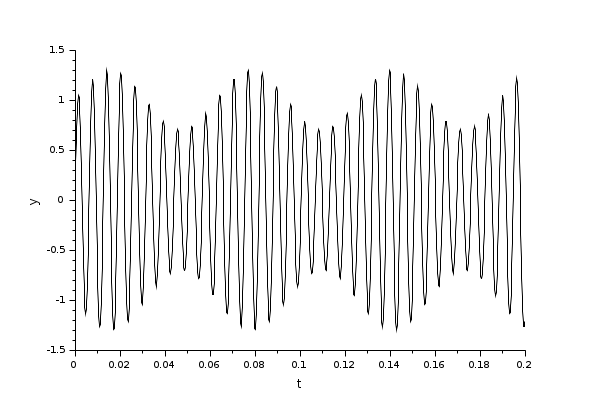IN_f
Regular Input Port
Block Screenshot

Description
This block represent a regular input port. It must only be used inside a Xcos Super Block and be connected to a regular input in the subsystem.
This block is a signal link from outside of a system into a sub-system. In a Super Block, the regular's input ports must be numbered from 1 to the total number of regular's input ports. You can set it with the Port number parameter.
Data types
Output : same type that the input connected to it in the sub-system.
Parameters

Port number
An integer defining the port number.
Properties : Type 'vec' of size 1.
Output port size
An vector of two integers defining the expected signal dimensions ([#rows #columns]). By default this field is set to [-1 -2] which means that the dimensions are inherited from the upper level. It should be useful to assign fixed values for separate compilation of the super block (Code Generation ).
Properties : Type 'vec' of size -1.
Output port type
An integer defining the expected signal type. By default this field is set to 1 which means that the type is inherited from the upper level. It should be useful to assign a fix value for separate compilation of the super block (Code Generation ).
Properties : Type 'vec' of size 1.
Default properties
always active: no
direct-feedthrough: no
zero-crossing: no
mode: no
regular outputs:
- port 1 : size [-1,-2] / type -1
number/sizes of activation inputs: 0
number/sizes of activation outputs: 0
continuous-time state: no
discrete-time state: no
object discrete-time state: no
name of computational function: input
Example
In the following example the Super block is an amplitude modulator. The IN_f block is used as a modulation signal input. Its data type is defined by the input type of the gain block that is a scalar double data type.

The following figure shows the output of the bloc :

Interfacing function
SCI/modules/scicos_blocks/macros/Sinks/IN_f.sci
| Report an issue | ||
| << INIMPL_f | Port & Subsystem palette | OUTIMPL_f >> |